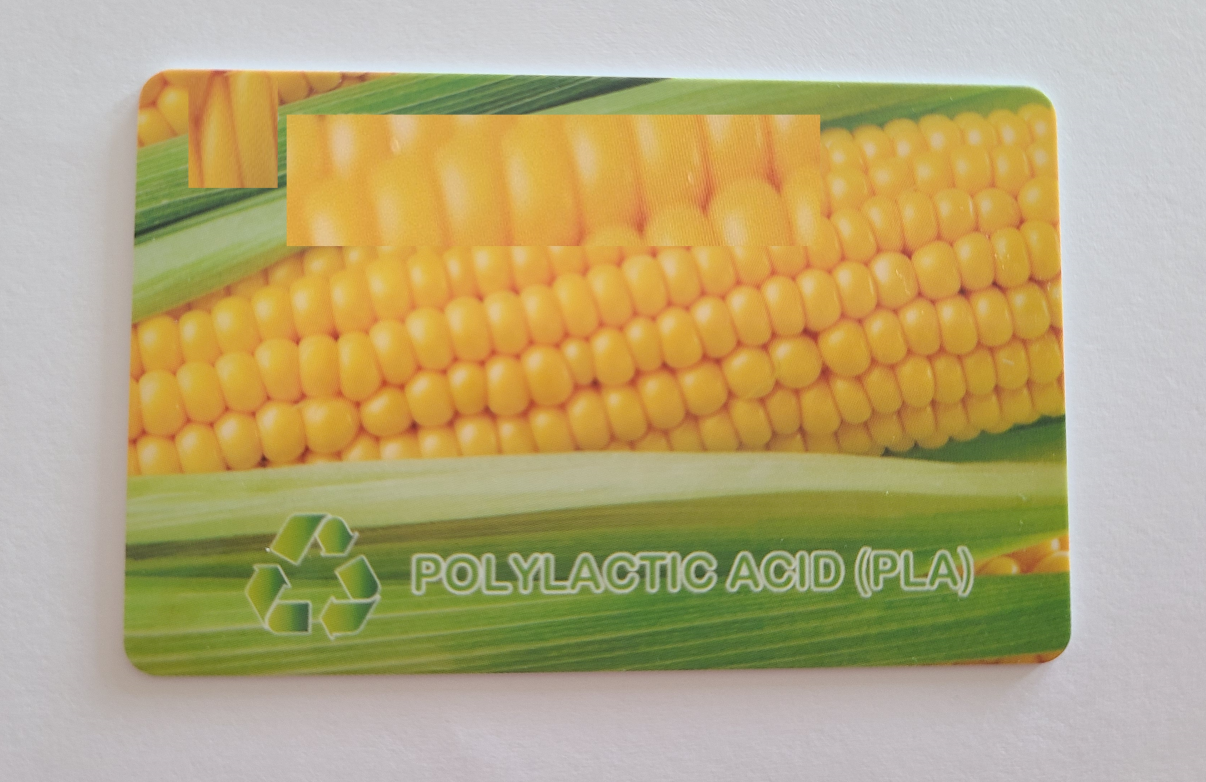Polylactic acid, also known as PLA, it is a thermoplastic aliphatic polyester. The Polylactic acid cards have excellent mechanical and processing properties, and after being discarded, it can be rapidly degraded through various means. Therefore, the polylactic acid cards is considered a green plastic with good usability. The Polylactic acid has the basic characteristics of a universal polymer material and is capable of handling most synthetic plastic applications. It can be widely used in the packaging industry, textile industry, agricultural industry, consumer goods market, etc. Polylactic acid has excellent biodegradability and can be completely degraded by soil microorganisms within one year after disposal, generating CO2 and water without polluting the environment.
Polylactic acid (PLA) Bio-sourced Eco-friendly cards is a new type of bio-based and renewable biodegradable material,made from starch raw materials proposed by renewable plant resources (such as corn, cassava, etc.). We Xin Yun RFID introduces Eco-Friendly Biodegradable plastic card, which has excellent biocompatibility, biodegradability, and the ultimate degradated products arecarbon dioxide and water, have no pollution to the environment.

FAQ of PLA (POLYLACTIC ACID)
1. Why PLA is also called “Corn plastic”?
PLA is derived from natural, renewable starchrich crop such as corn, potato.
2. How does PLA decompose?
Under compost condition PLA will decompose into lactic acid when polymers are broken down. Lactic acid will decompose into water and carbon dioxide by bacteria.
3. How long does it take for PLA to decompose?
It will take 90-180 days under compost condition according to different sizes and thickness of the products.
4. What is PLA compost condition?
Compost condition refers to the co-existence of three key elements:
1). High temperature (58-70ºC)
2). High humidity
3). Bacteria co-exist
5. Will PLA products start decompose under normal temperature?
No, it will not. Same as the petroleum-based plastic products, PLA products can be used under normal condition. However, as PLA is not heat-resistant, it is recommended to be used under the temperature of 50ºC.
6. Any special precaution for PLA storage and delivery
1). Storage: Dry, ventilated and cool environment with optimal temperature 5~35℃.
2). Delivery: Prevent from direct sunshine and pressing, use strong carton box, control temperature during container load byapplying insulated materials.
